Lipoma Removal Surgery London
At Rejuvence we offer a wide range of lipoma removal surgeries. Lipomas are small lumps found below the skin. They are soft and squishy and made of fatty tissue. Lipomas can vary in size from the size of a pea up to several centimetres across. Rarely they can be quite large and deep, attached to underlying muscle and can cause pain and restriction of movement. On the whole they are completely pain free and benign (non-cancerous).
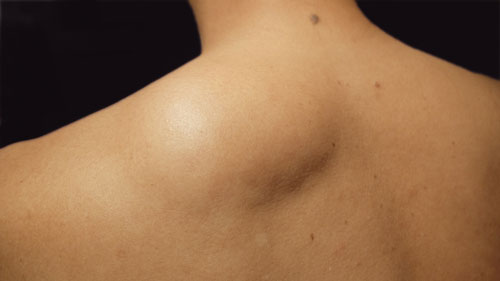

What do they look like?
They are normally quite soft and found just under the skin. They are most often found over the chest, back, shoulders, neck and face. They can also occur on the thighs and the bottom. When felt they are often slightly mobile and firm. In the vast majority of cases they do not cause any pain or discomfort.
Why do lipomas form?
Lipomas can occur anywhere on the body. They tend to be more common in men than women and generally are more prevalent in those between the ages of 40 and 60 years of age. The cause of lipomas is not clear but likely causes include genetic factors, metabolic factors and trauma. It is believed that trauma can result in the triggering of fat cell proliferation and development of a fatty lump consisting of predominantly mature fat cells that can be difficult to tell apart from normal pre-existing fat cells. They can also develop within a capsule separating them from normal fatty tissue.
Can I get treatment on the NHS?
Lipomas can easily be removed. The removal of lipomas is considered a cosmetic procedure and therefore treatment is NOT available on the NHS. In the first instance, if you have a lump anywhere on the body, if the lump is red, hot or painful, or is hard and does not move, it should be checked. Your GP can normally confirm that it is a lipoma.
How are lipomas removed?
Lipomas can either be excised (cut out) or reduced in size using liposuction techniques. At Rejuvence this procedure is carried out under local anaesthetic. However, we do have the option of carrying out surgery under sedation. We normally recommend sedation for lipomas that are quite large and for those who are quite nervous about being awake during their treatment.
Where do lipomas typically occur?
Lipomas can occur on any part of the body where there are fat cells. Lipomas typically form subcutaneously (just under the skin) but can also occur below the muscular layer, within muscles and also be visceral (i.e. found on the surface of internal structures such as the bowel). Common sites for lipomas include the neck, chest, back, shoulders, arms and thighs. Lipomas also commonly occur on the forehead and scalp.
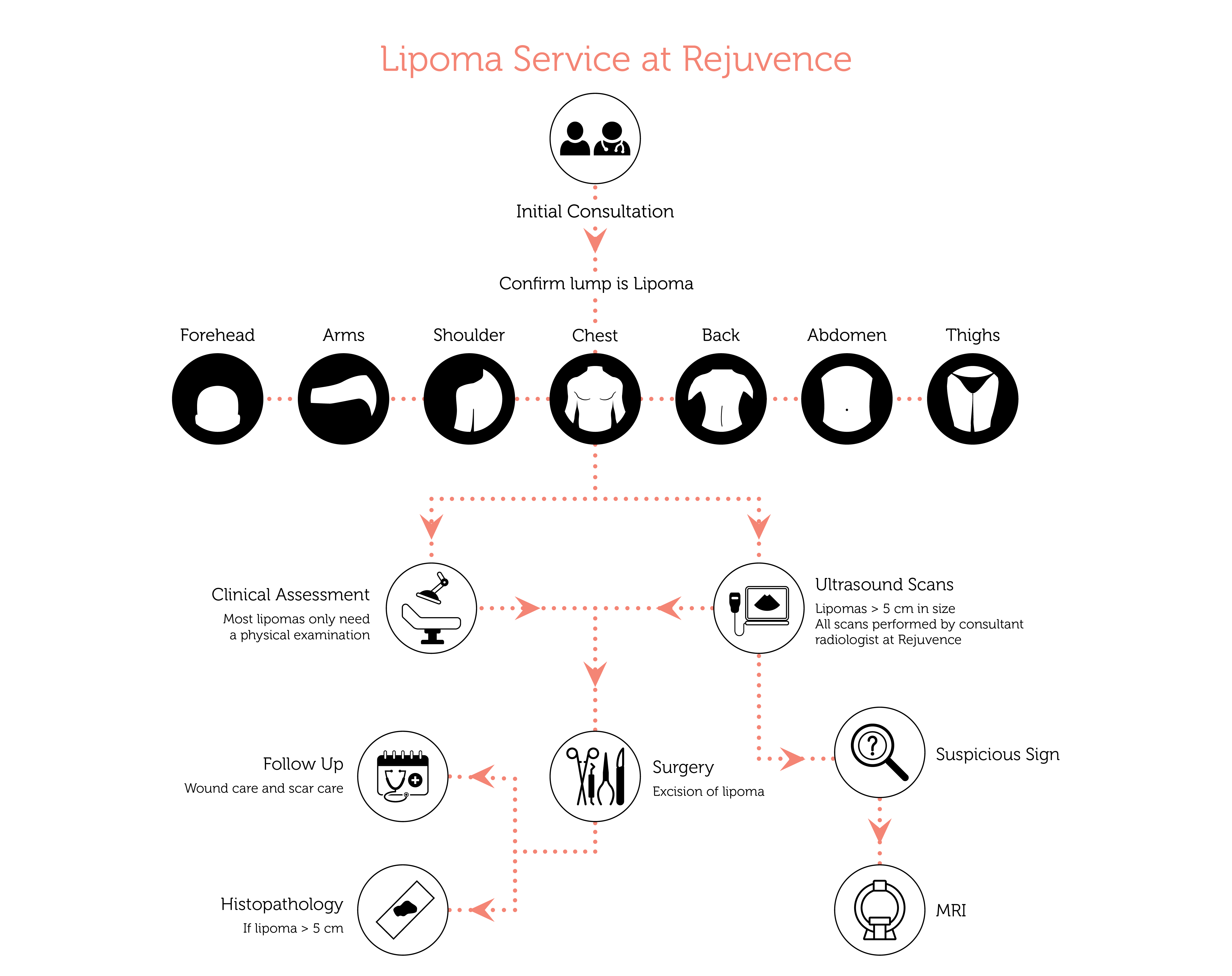

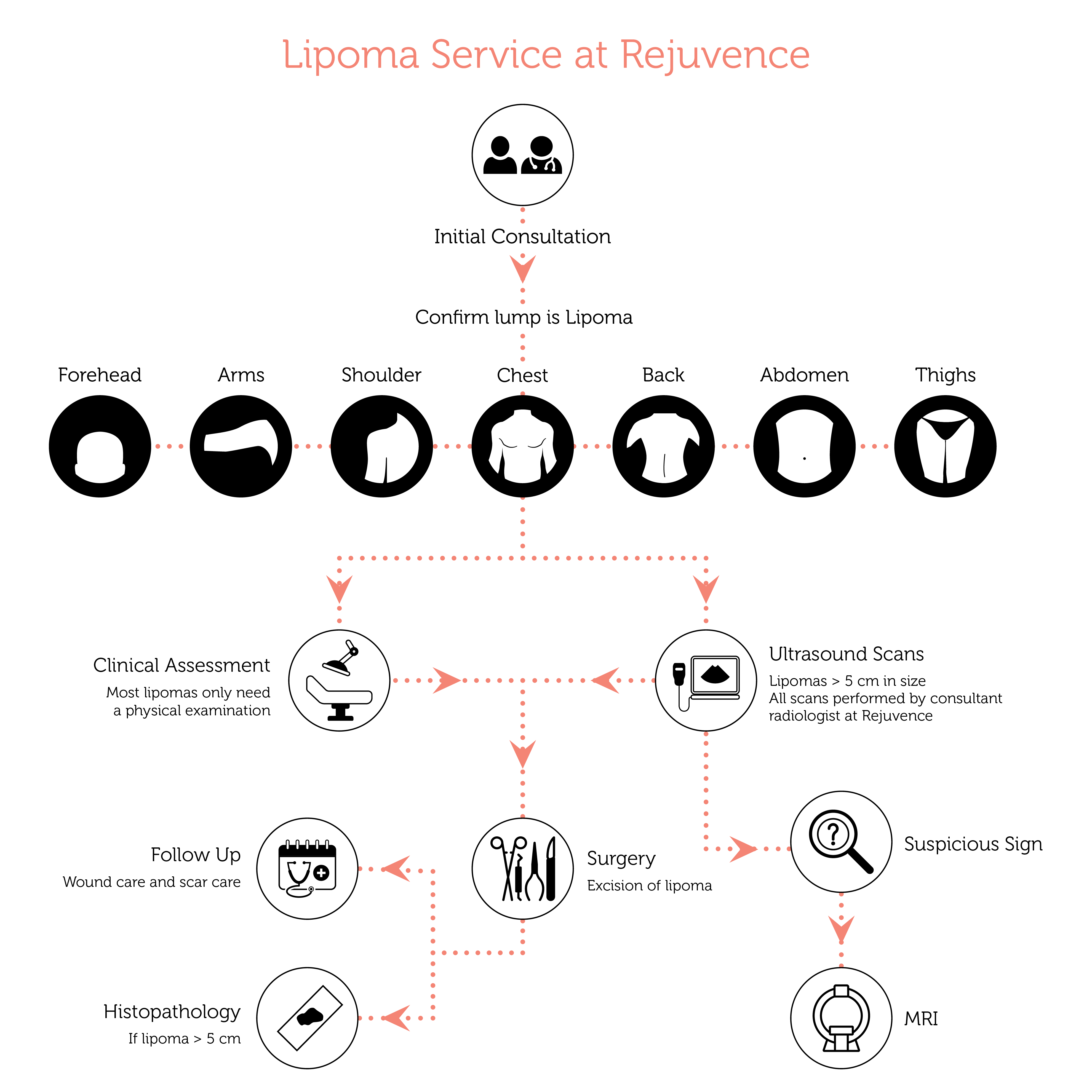

Lipomas on the face
The vast majority of lipomas on the face occur on the forehead with other locations including the back of the scalp and sometimes along the angle of the jaw. Forehead lipomas often lie below the muscles of the forehead as opposed to being just underneath the skin. Treatment involves excision and extraction. Incision is often made in line with the wrinkles of the forehead and following extraction careful intricate stitching to ensure an excellent cosmetic result. Forehead lipomas occur more in men than women. Recurrence rate is often less than 2%. We can carry out a Point of Care Ultrasound scan in the clinic to help confirm the lump is a lipoma as opposed to a sebaceous cyst. It can also help to confirm location and depth of the lipoma relative to the muscle and whether there is a capsule. All this information can help to better plan surgical removal. Lipomas on the face are normally benign and smaller than 5cm. If appropriate our doctors can arrange for the lipoma to be sent to a lab for histopathology to exclude anything suspicious.
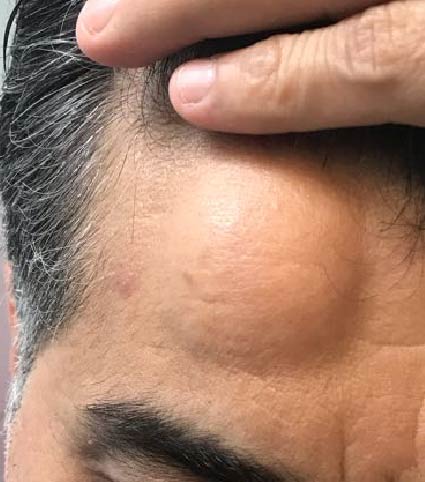

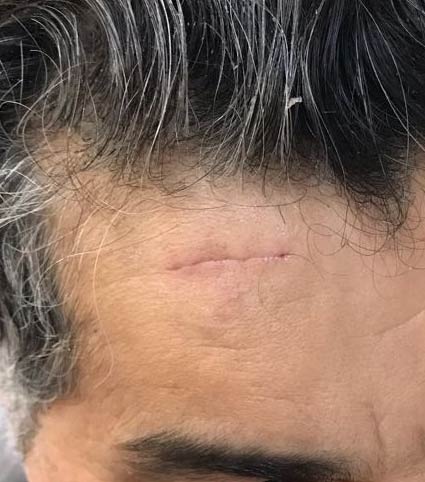

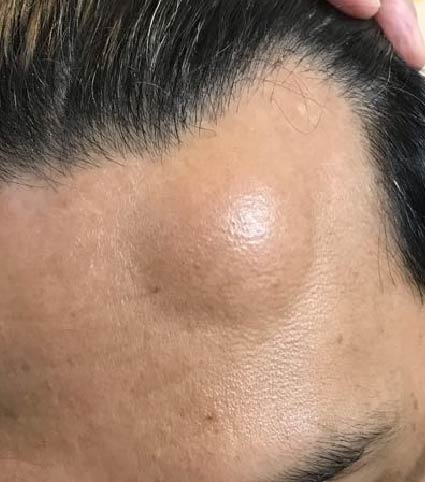

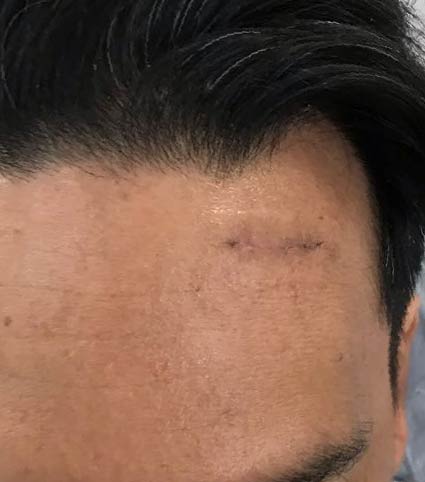

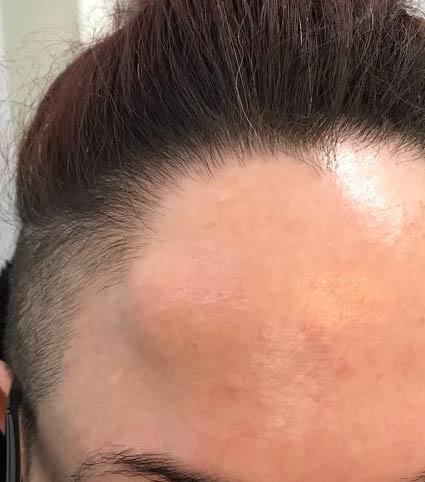

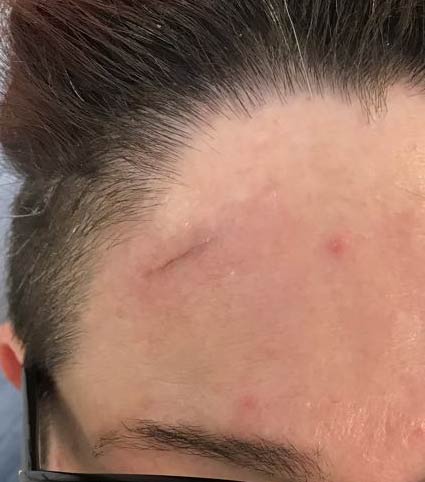

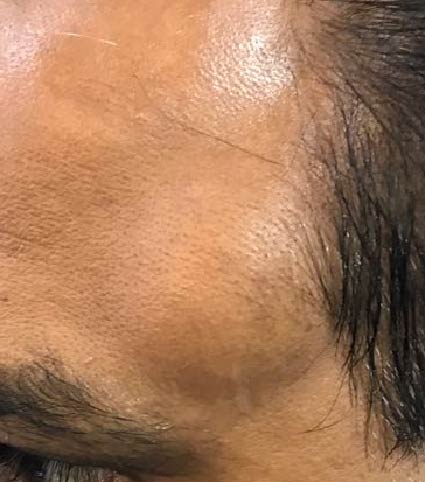

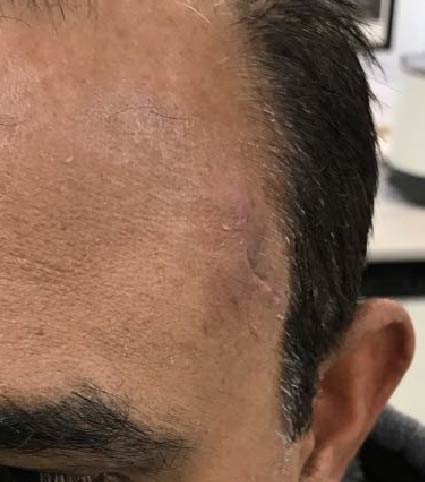

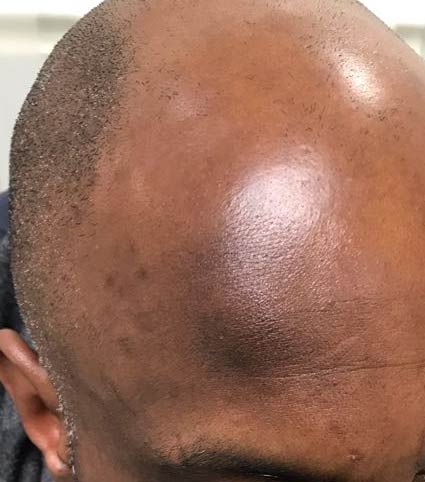

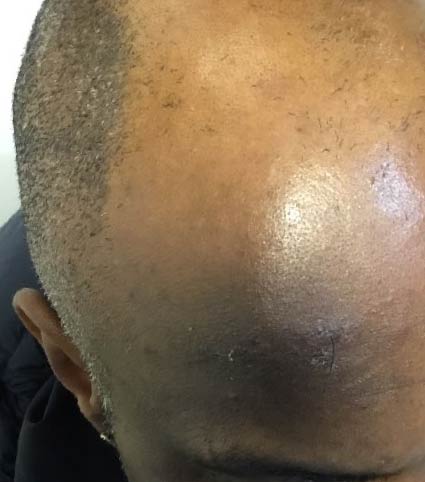

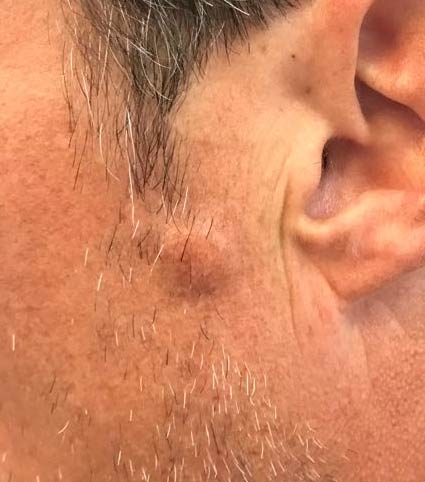

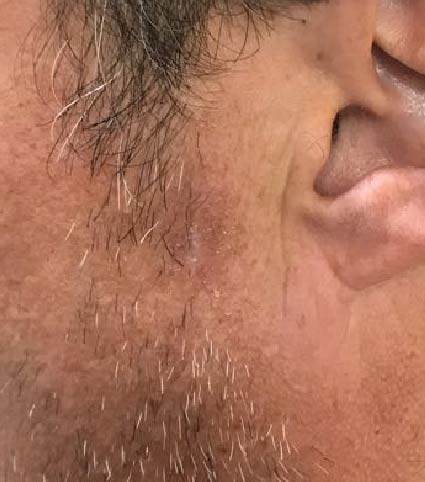

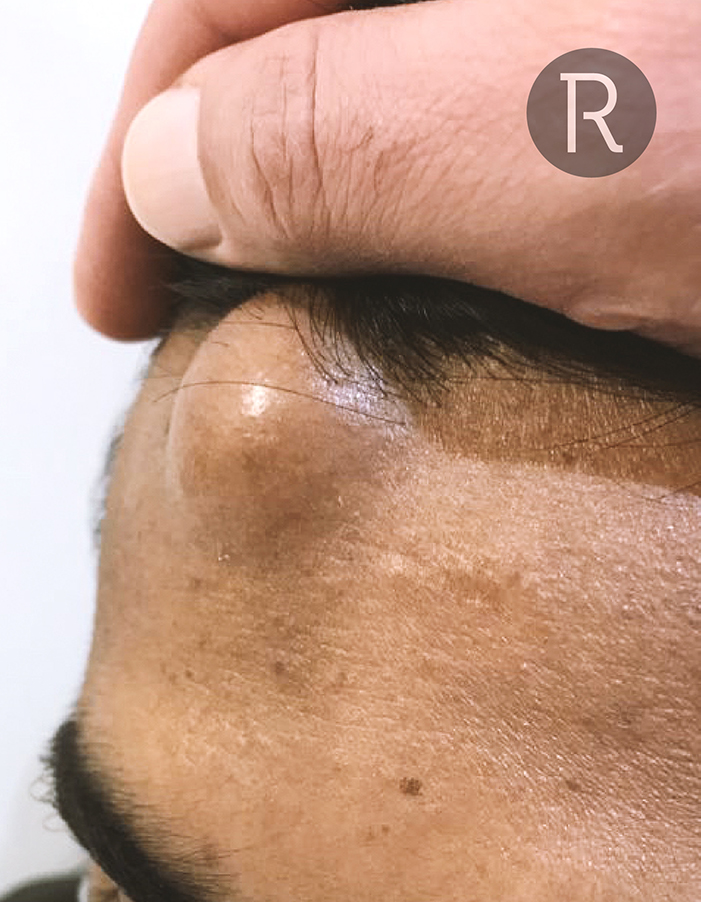

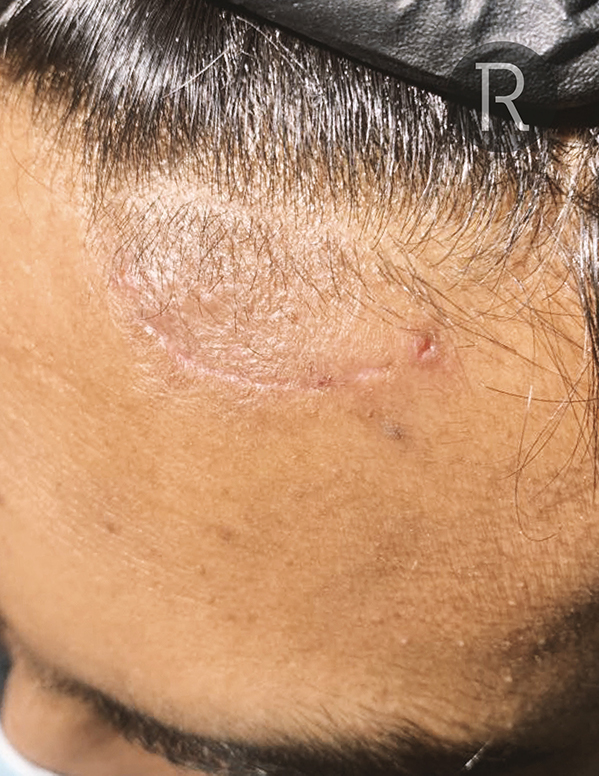

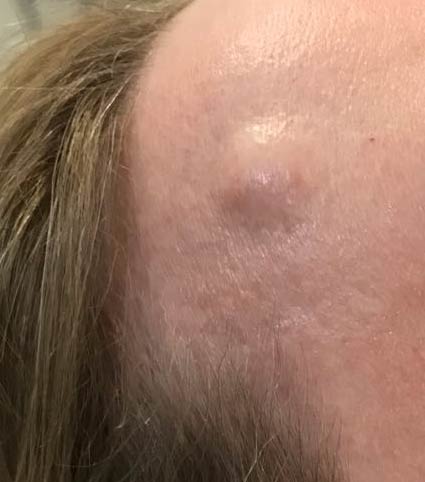

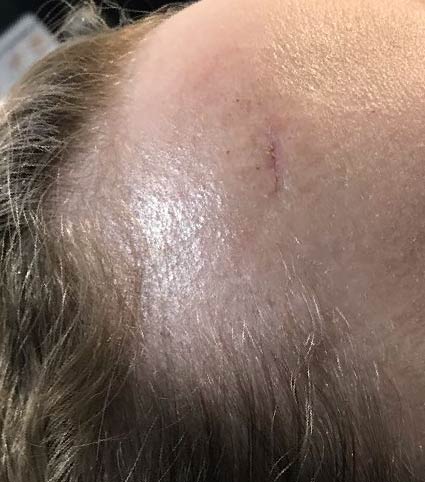

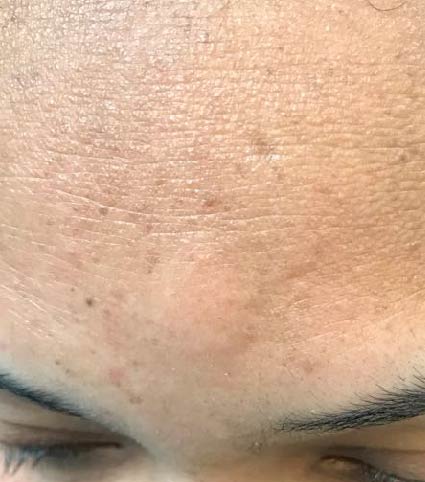

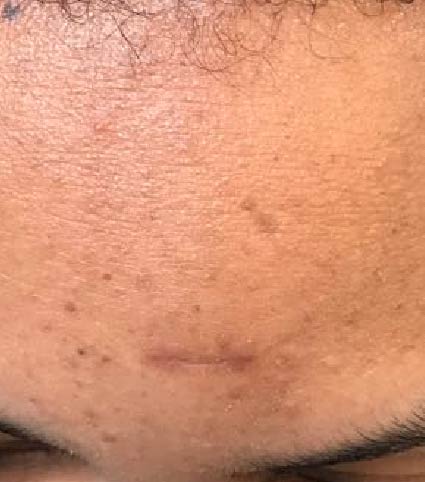

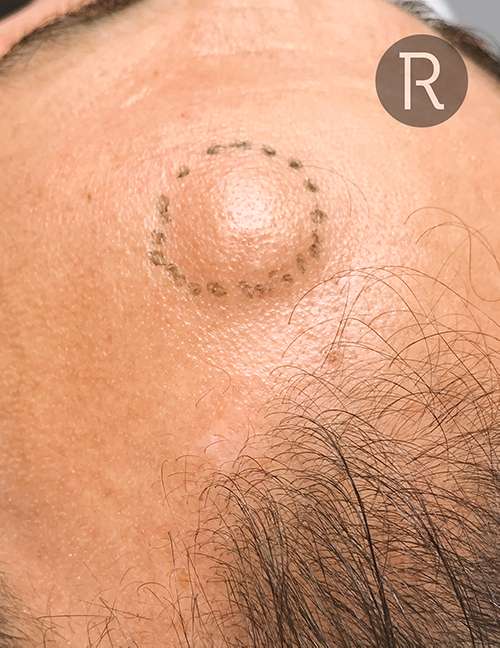

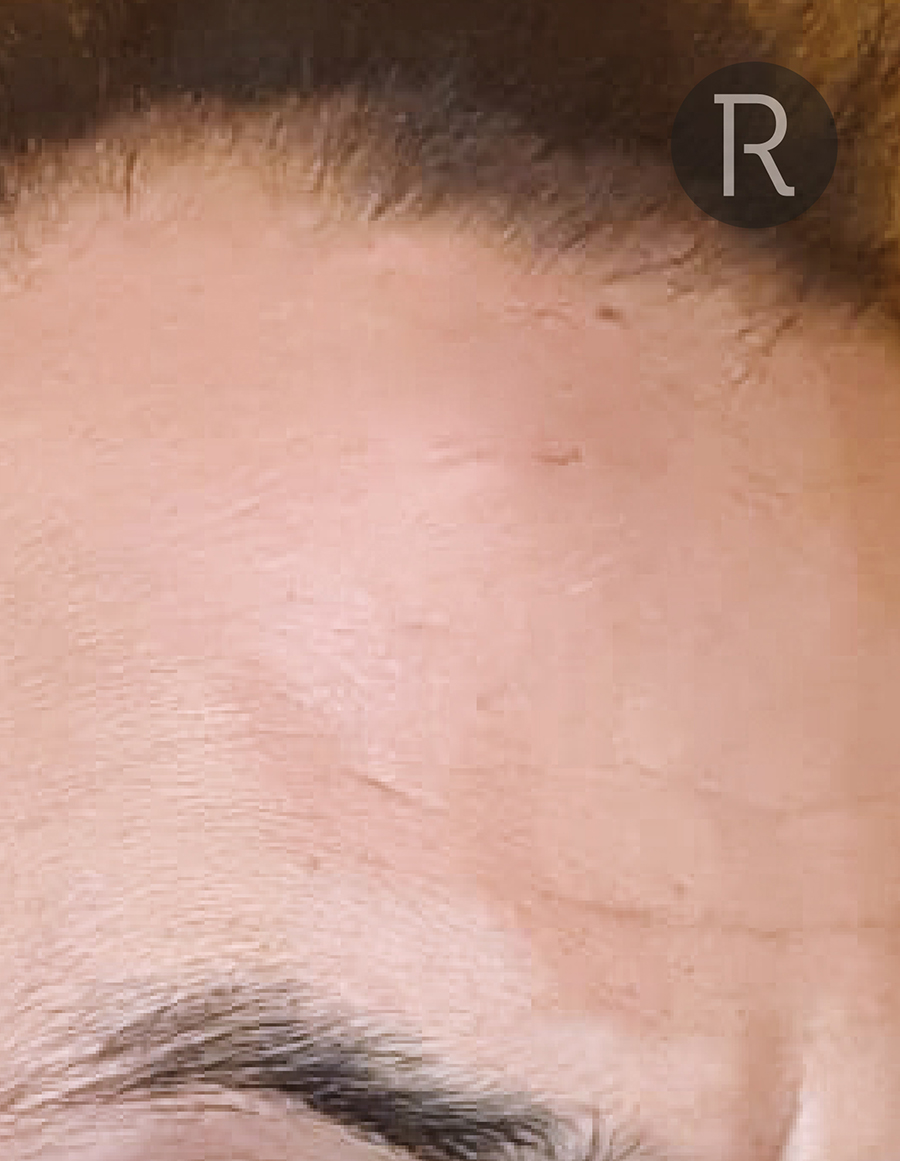

©Individual results may vary.
Post-op pictures vary in terms of the number of days and weeks after surgery and hence there is some variation in the appearance of the scars. With time all post-operative scars improve.











Flexible payment options for surgical treatment – 0% APR available. Spread the cost of your treatment today!
Terms and Conditions apply. *Acceptance subject to credit status.











Flexible payment options for surgical treatment – 0% APR available. Spread the cost of your treatment today!
Terms and Conditions apply. *Acceptance subject to credit status.
Lipomas on the neck
Lipomas on the neck often occur over the back of the neck and can be close to the midline. They can grow to a significant size and become very noticeable. Many sufferers can become self-conscious and avoid wearing certain types of clothes such as t-shirts and dresses. Prior to considering surgical removal of the lipoma it is important to have some definitive imaging. We normally advise patients to get an ultrasound scan or MRI of the lesion through their GP. If this is not possible we can arrange this for you privately. A scan will help to confirm the lump is a lipoma and not a rarer form of cancer. It will also help to confirm the dimensions of the lipoma and to ensure that there is no connection to the underlying spine. Lipomas on the neck can be surgically removed under local anaesthetic. If needed we are able to offer surgery under sedation as well. At Rejuvence we are careful to ensure excellent cosmetic results through accurate placement of incisions and intricate stitching. We always arrange for a 2 week up follow-up and repeat point of care ultrasound scan to ensure there are no complications. All lipomas on the neck are sent for histopathology to exclude the presence of any cancer.
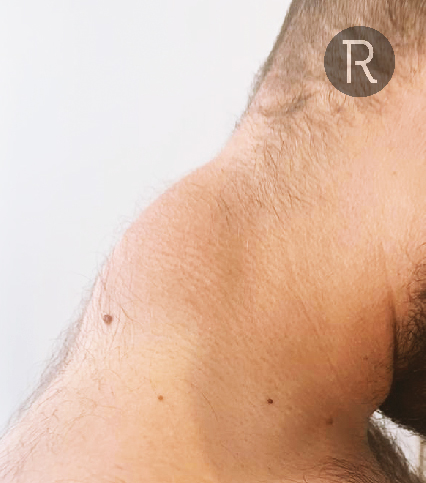

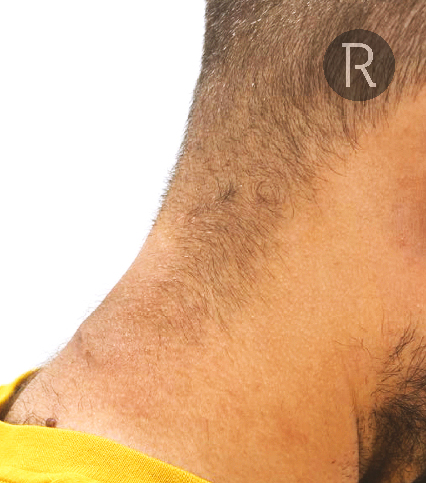

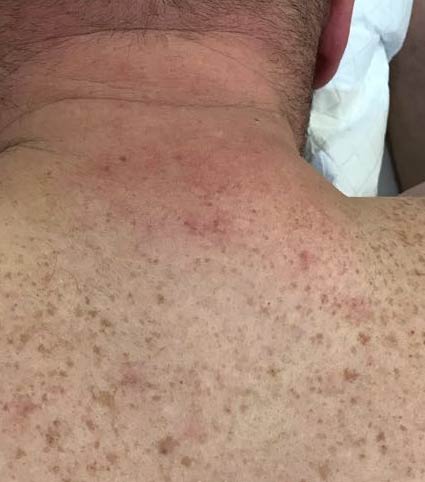

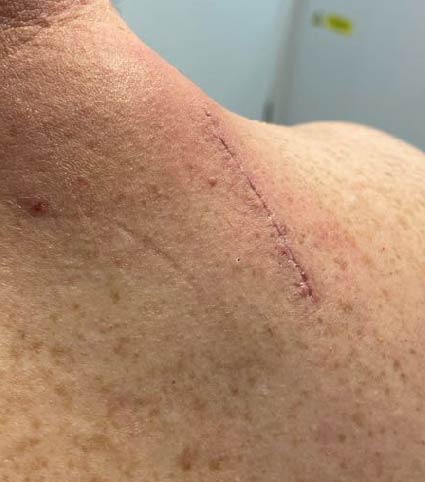

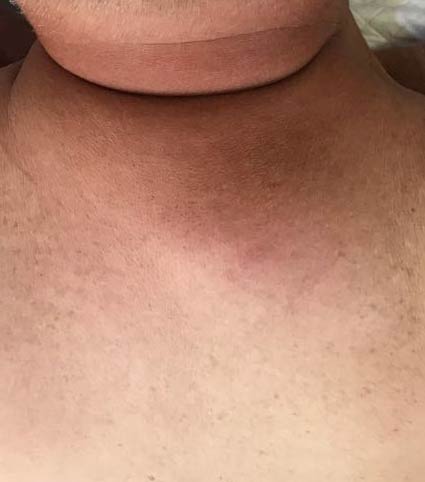

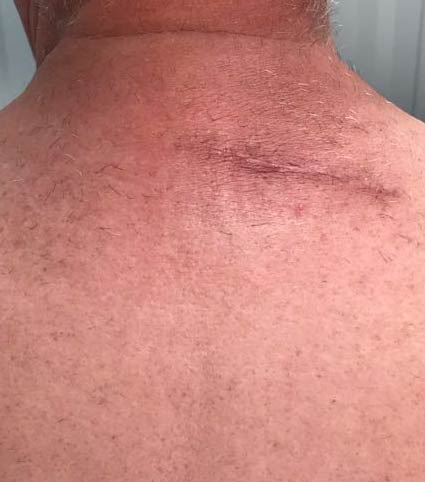

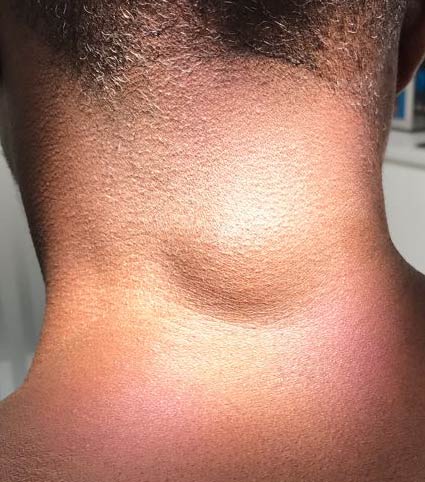

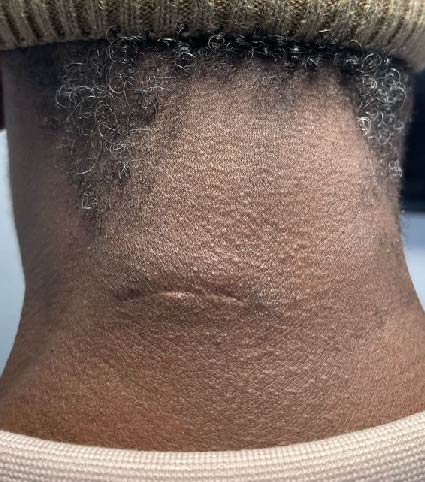

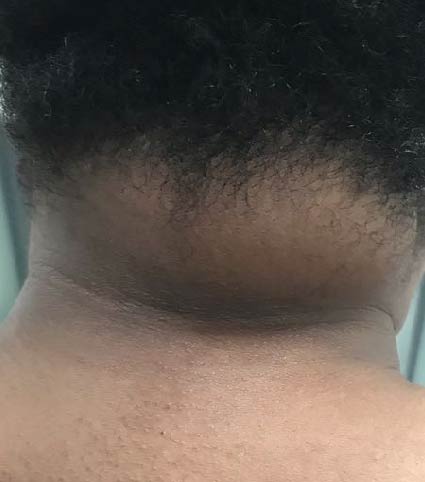

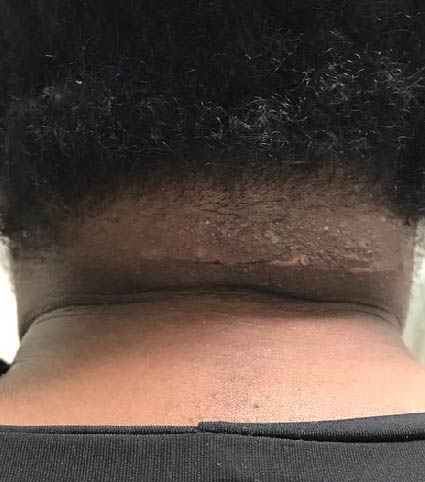

©Individual results may vary.
Post-op pictures vary in terms of the number of days and weeks after surgery and hence there is some variation in the appearance of the scars. With time all post-operative scars improve.











Flexible payment options for surgical treatment – 0% APR available. Spread the cost of your treatment today!
Terms and Conditions apply. *Acceptance subject to credit status.











Flexible payment options for surgical treatment – 0% APR available. Spread the cost of your treatment today!
Terms and Conditions apply. *Acceptance subject to credit status.
Lipomas on the tummy
Lipomas can occur on the abdomen and usually occur over the muscular abdominal wall. They are often just under the skin and above the abdominal muscles. Lipomas can occur in the middle or over the flanks and can grow to quite a large size. Patients with a lump should initially present to their GP who should arrange for a scan, especially if the lumps are greater than 5cm in size. The scan will often be an ultrasound scan and should findings suggest the possibility of a sarcoma, they should arrange for a MRI scan. Where lipomas are multiple and small in size we can consider using fat dissolving injections (under ultrasound guidance) to shrink them in size and avoid multiple surgical scars. Larger lipomas require surgical excision and extraction, especially if they are shown to be within a capsule on ultrasound. Sometimes liposuction is also possible and this helps to avoid larger scars associated with surgical excision and extraction. However, recurrence rates can be higher with fat dissolving injections or liposuction as opposed to excision and extraction.
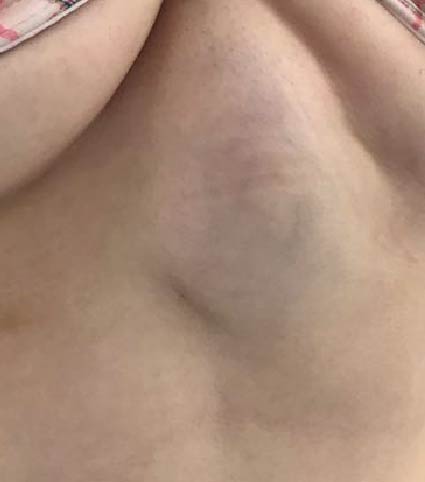

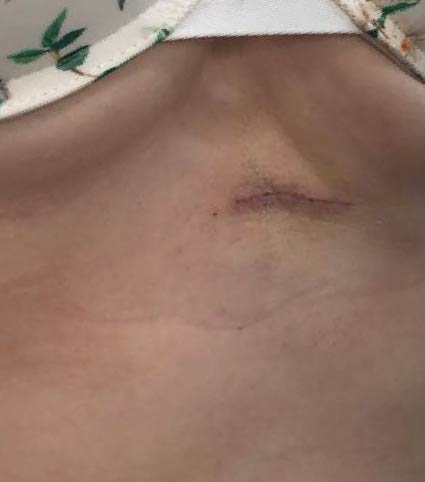

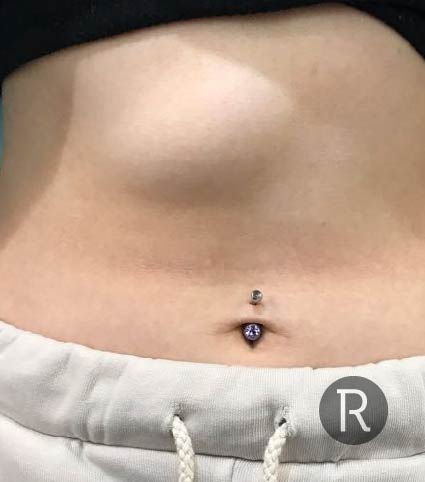

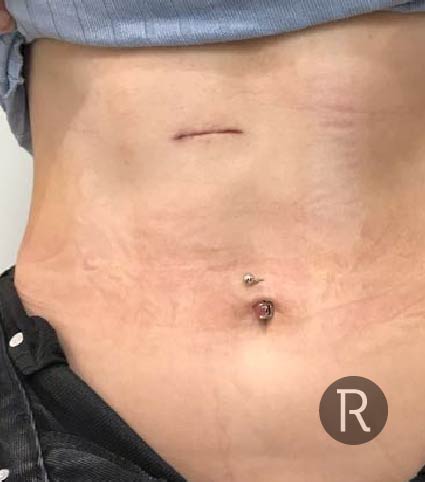

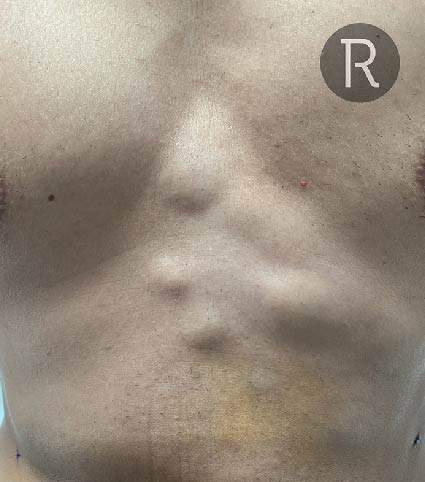

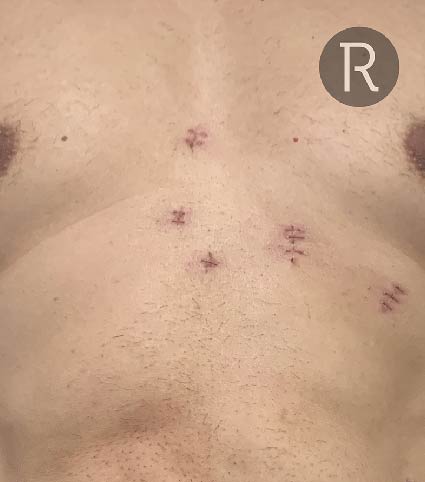

©Individual results may vary.
Post-op pictures vary in terms of the number of days and weeks after surgery and hence there is some variation in the appearance of the scars. With time all post-operative scars improve.











Flexible payment options for surgical treatment – 0% APR available. Spread the cost of your treatment today!
Terms and Conditions apply. *Acceptance subject to credit status.











Flexible payment options for surgical treatment – 0% APR available. Spread the cost of your treatment today!
Terms and Conditions apply. *Acceptance subject to credit status.
Lipomas on the back
Lipomas on the back can often be confused with sebaceous cysts. They can both present similarly. Sebaceous cysts can often be associated with pain and get infected resulting in skin changes and discharging of pus. An ultrasound scan can help to differentiate between a lipoma and sebaceous cyst. We often carry out a Point of Care Ultrasound in the clinic as part of our clinical assessment. Surgical treatment for a lipoma and cyst are similar and both are regularly performed at Rejuvence. Surgical excision and extraction is the treatment of choice and is carried out under local anaesthetic. If needed we are able to offer sedation for surgery. Lipomas on the back can grow to a large size. All lipomas, especially those greater than 5cm in size, are sent to a lab for histopathology to ensure they are not cancerous. All patients are brought back for follow up at which point a repeat ultrasound is carried out to check for a seroma which is a collection of fluid and a common complication. At the follow-up we can also advise regarding scar management to ensure an excellent cosmetic result especially in those at risk of hypertrophic and keloid scars.
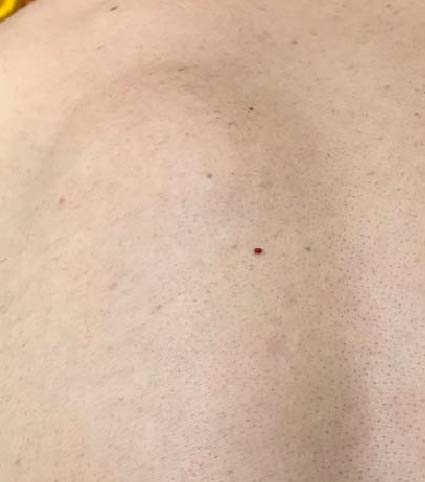

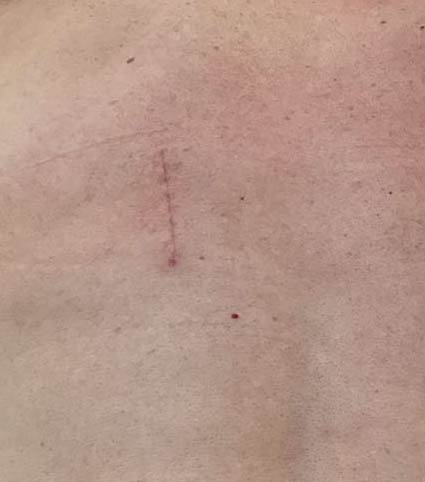

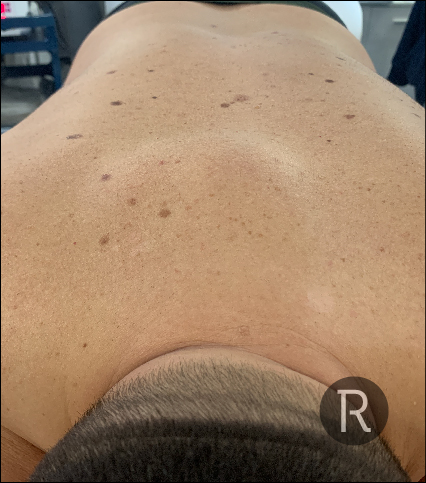



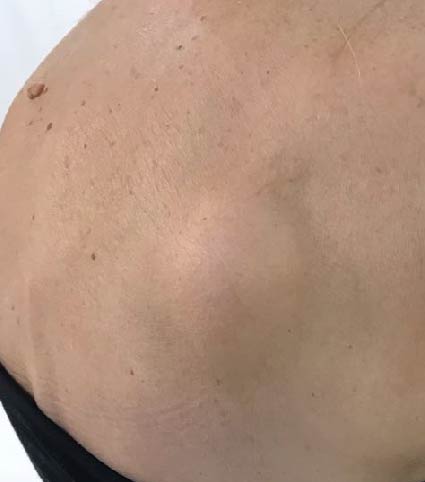

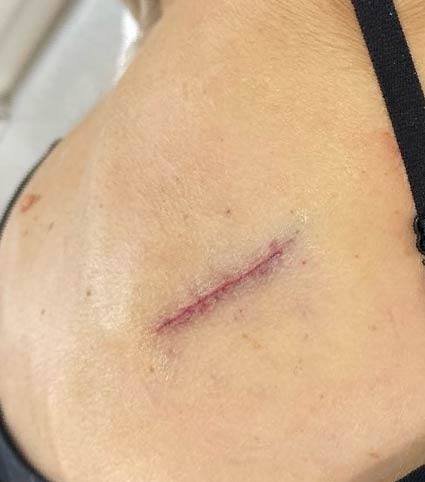

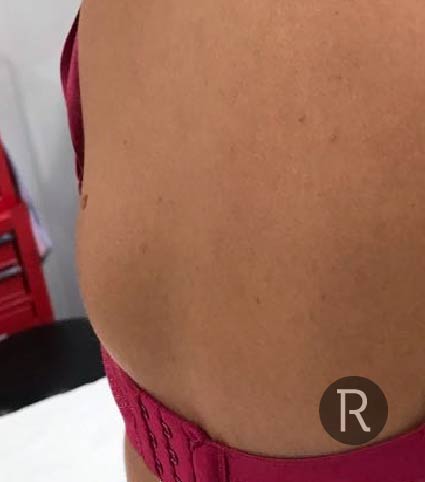

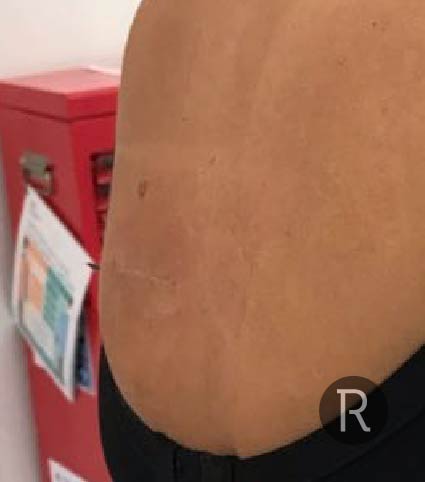

©Individual results may vary.
Post-op pictures vary in terms of the number of days and weeks after surgery and hence there is some variation in the appearance of the scars. With time all post-operative scars improve.











Flexible payment options for surgical treatment – 0% APR available. Spread the cost of your treatment today!
Terms and Conditions apply. *Acceptance subject to credit status.











Flexible payment options for surgical treatment – 0% APR available. Spread the cost of your treatment today!
Terms and Conditions apply. *Acceptance subject to credit status.
Lipomas on the arms and legs
Lipomas are often found on the arms and legs. In certain lipomatous conditions patients can present with multiple small lipomas occurring on the forearm and arms. In the case of multiple small lipomas we can consider treating them with fat dissolving injections as opposed to surgical excision and extraction thereby avoiding multiple scars. Larger lipomas can occur on the shoulders or above/below the knees. As with a lot of other regions of the body, where a lipoma is larger in size definitive imaging in the form of an ultrasound scan or MRI are required to exclude the possibility of a rarer cancerous lesion such as a liposarcoma. Patients contacting us regarding larger upper and lower limb lipomas will be advised to ask their GP to arrange for an ultrasound scan or MRI. If this proves difficult we can help to arrange these privately. Treatment is carried out under local anaesthetic. Careful attention is paid to stitching to ensure a good cosmetic result. Following surgery, larger lipomas are all sent to a lab for histopathology to ensure they are not cancerous.
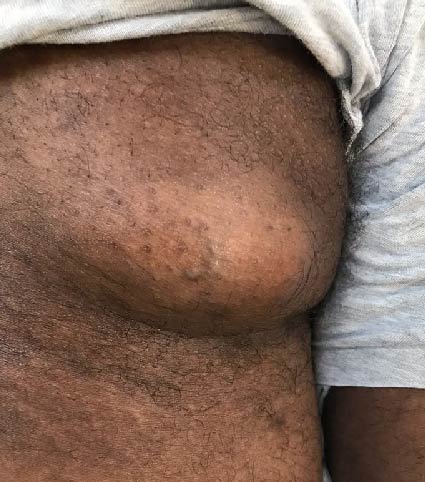

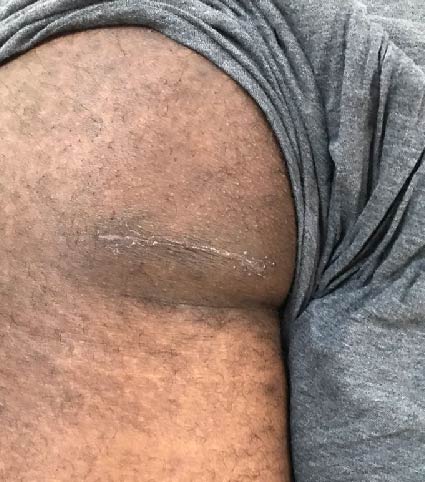

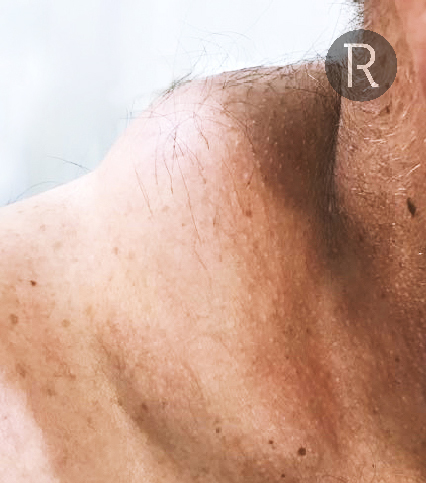



©Individual results may vary.
Post-op pictures vary in terms of the number of days and weeks after surgery and hence there is some variation in the appearance of the scars. With time all post-operative scars improve.











Flexible payment options for surgical treatment – 0% APR available. Spread the cost of your treatment today!
Terms and Conditions apply. *Acceptance subject to credit status.











Flexible payment options for surgical treatment – 0% APR available. Spread the cost of your treatment today!
Terms and Conditions apply. *Acceptance subject to credit status.
The majority of lipomas do not require any scans. Simple clinical examination will usually be enough to confirm that it is likely to be a lipoma. In some cases of lumps on the forehead and face it can be difficult to distinguish between a lipoma and a sebaceous cyst. In these cases an ultrasound scan can be very helpful.
At Rejuvence our doctors will carry out a Point of Care Ultrasound Scan (POCUS) to help identify and define the lipoma. This can be especially helpful for planning surgery. Ultrasound is the initial scan of choice for any lumps or bumps on the body. For lumps greater than 5cm in size we will insist on getting a formal ultrasound scan to ensure they are not cancerous in nature. If anything suspicious is identified on ultrasound we will recommend an MRI scan and will not proceed with surgery.
As part of our Lipoma service at Rejuvence Clinic we offer ultrasound scans performed by our resident Consultant Radiologists. We believe in offering our patients the best care possible and all under one roof. Where our surgeons feel a scan is necessary prior to embarking on surgery we can arrange for an immediate ultrasound scan at our clinic. If you have had an ultrasound scan with your GP we will ask you to provide us with a copy of the formal report prior to any surgery.
Lipomas are almost always benign in nature. Benign means they are not cancerous in nature. However, lipomas greater than 5cm and especially those occurring over the back and lower limbs can be cancerous in nature. These are referred to as liposarcomas. In these cases an ultrasound scan is essential.
The most common technique used to treat lipomas is excision (cutting out). This is carried out under local anaesthetic. Apart from the slight sting of the local anaesthetic, the procedure is completely painless. A small incision is made over the lump, and the lipoma identified. It is then separated away from the surrounding tissue and pulled up to the surface. The stalk of the lipoma is cut away and the bed cauterised to ensure there is no bleeding. Once completely removed the incision is stitched closed.
There will be a small scar over the site of the lipoma. This scar is often the length of the lipoma at most. To achieve the best possible cosmetic outcome we use a combination of stitches and glue. In the vast majority of people the scar heals well and an excellent cosmetic result is achieved. Rarely, when the lipoma is located over the shoulders, chest or back, and the individual is susceptible, a keloid scar can develop. This is a raised scar that can end up being quite prominent. At your initial consultation, we will be able to advise on the likelihood of this occurring. In addition any resultant keloids can be treated to reduce them in size. For further information please refer to the keloids section.
Liposuction can be used to treat lipomas. Liposuction can be particularly effective where lesions are slightly larger and more widespread and avoid having large surgical scars. However, recurrence rates may be higher with liposuction than surgical excision and extraction.
Fat dissolving injections such as Aqualyx™ or Kybella™ have become extremely common for reducing fat in the neck and abdomen for cosmetic reasons. Theoretically such injections could be considered for the treatment of superficial lipomas. There are very few studies looking at the success of fat dissolving injections for lipomas. At Rejuvence Clinic we consider the use of fat dissolving injections on a case by case basis. For those suffering from multiple superficial lipomas especially on the upper extremities or abdomen, this is likely to be a better option assuming there are no concerns regarding the possibility of the lumps being cancerous.Treatment would likely need to be repeated though. In addition the recurrence rate can be higher. For larger lipomas, especially where the lesions consist of denser fat cells, fat dissolving injections may not be as effective. Prior unsuccessful treatment rounds with fat dissolving injections can also make surgery much more difficult.
As with any minor surgical procedure there are some risks and complications associated with lipoma surgery. The risks and complications are specific to where the lipoma is located and can include damage to adjacent blood vessels and nerves alongside infection. Following surgical removal of a lipoma, especially those that are larger in size, you can be left with a potential dead space where the lipoma once was. This dead space can collect with fluid as a result of inflammation, also known as a seroma. It is always important to choose wisely when it comes to selecting a clinic for your treatment. At Rejuvence we have experienced surgeons who use excellent surgical technique to try to minimise any risks or complications.
In the vast majority of cases it is not necessary to send off the lipoma to the lab for histopathological assessment. Histopathology of a lump involves it being checked under a microscope in the lab to ensure there is no evidence of cancer. Where the lipoma removed is greater than 5cm our surgeons may recommend histopathology. In this case we will insist on the lesion being sent for assessment at an additional cost.
It is rare for lipomas to return once they have been excised completely. It is extremely important to cut into the lipoma and ensure that all involved fat lobules have been removed. In the majority of cases, with good surgical technique, this is successfully achieved.
Why choose Rejuvence for your Lipoma treatment?
At Rejuvence, we have extensive experience in the treatment and removal of lipomas. We offer a complete service from imaging, to surgery and even histopathology services to confirm that your lump is indeed a lipoma. We are able to achieve excellent cosmetic results in the vast majority of patients. All of this can be offered at an extremely competitive price. We are well equipped and have invested heavily in our operating facilities to ensure we are able to offer all our clients the best possible care and outcomes. For further information please book a consultation.

























